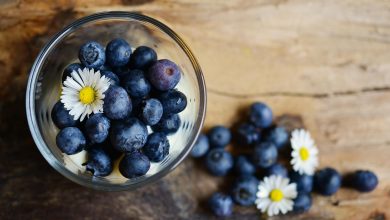Natural Remedies for Gum Diseases

Some herbal solutions can be supported against gum problems such as gingivitis and bleeding. Because many plants are considered to be very effective against such problems. We can talk about plants that will benefit gum diseases and their usage as follows:
Daisy
It is confirmed that chamomile has at least as much effect as mouthwashes or mouthwashes in treating gingival bleeding and inflammation. Thanks to the antiseptic and anti-inflammatory compounds found in chamomile, gum problems are largely resolved. At the same time, chamomile is a type of plant that can be used to protect against such diseases.
The use of chamomile in the gum treatment is as follows:
- First, 2 or 3 teaspoons of chamomile are put in 250 ml of boiling water and kept in boiling water for about 10 minutes.
- Then boiling water is filtered and drunk after meals or used by rinsing the mouth as if gargling.
It is recommended that you do not use this cycle if you feel an allergic reaction during or after use.
Mint
In order to prevent gingivitis, you can count on mint, which is also used in your toothpaste. Because peppermint also fights bacteria that cause gum problems. You can use mint for gums by throwing 2 teaspoons of dry mint in 250 ml of boiling water. Then you can use the tea you will obtain with this mixture by drinking or rinsing your mouth. Instead of eating peppermint sugar or chewing peppermint gum, chewing mint leaves will be much more effective in solving such problems.
Licorice Root
Licorice is a natural herb that does not cause gingivitis or rotting. It is recommended to add licorice root to your anti-gingivitis teas instead of honey or sugar. At the same time, as a result of the researches, it has been revealed that licorice is useful in controlling and controlling plaque formation.
If licorice is used at a reasonable rate of 3 cups of tea, there is no harm. However, if it is used for a long time or in large quantities; may cause drowsiness, headache, water and sodium retention in the body, high blood pressure and loss of potassium.
Teatree
Teatree oil is always considered a powerful antiseptic ingredient. It is also the first-choice disinfectant for many outside herbalists. You can use this oil for the treatment of wounds in the mouth and gingivitis. However, you should be careful not to swallow it while using this oil.
You can use Teatree oil as a mouthwash by adding a few drops to a glass of water. As with other essential oils, you should never use this oil by mouth.
Salvia
The majority of people living in Europe prefer to care for their teeth with sage leaves. Because some antiseptic ingredients in the island tea stop bleeding in the gums. The use of island tea on teeth and gums is made by adding 2 or 3 teaspoons of salvia leaves to a 250 ml boiling water. However, as with any herbal product, this herb should be used in a reasonable amount. Because a substance called thu-jone contained in it can cause spasms to occur if it is taken at high rates.
Dead Nettle
In addition to magnesium, which is located in the leaves of stinging nettle, recent research has shown that stinging nettle tea has an antibacterial property. Toothpastes and mouthwashing liquids, including nettle, have been confirmed to significantly reduce plaque formation in the teeth. In addition, if a certain amount of juniper is added to nettle, its effect increases more.
Turmeric
Since turmeric plant has anti-inflammatory, antiseptic and antibiotic properties, it is a very suitable and natural product to reduce plaque and gingivitis occurring in the tooth. Coconut, which is in the turmeric mixture, is also very effective in removing inflammations. However, since this mixture will be a strong mixture, you should apply it to your teeth 2 or 3 times a month. Apart from this, you should not disrupt the use of toothpaste and miswak. The way this mixture is prepared is as follows:
- 1 teaspoon of powdered turmeric,
- Half a teaspoon of salt,
- 1 teaspoon of coconut oil
After all these materials are mixed, it is applied to the teeth as a layer. Then, this mixture in the form of a layer is kept on the teeth for 2 minutes, then the tooth surfaces are brushed with a toothbrush. If this procedure is applied twice a day, gingival problems will be significantly reduced.





